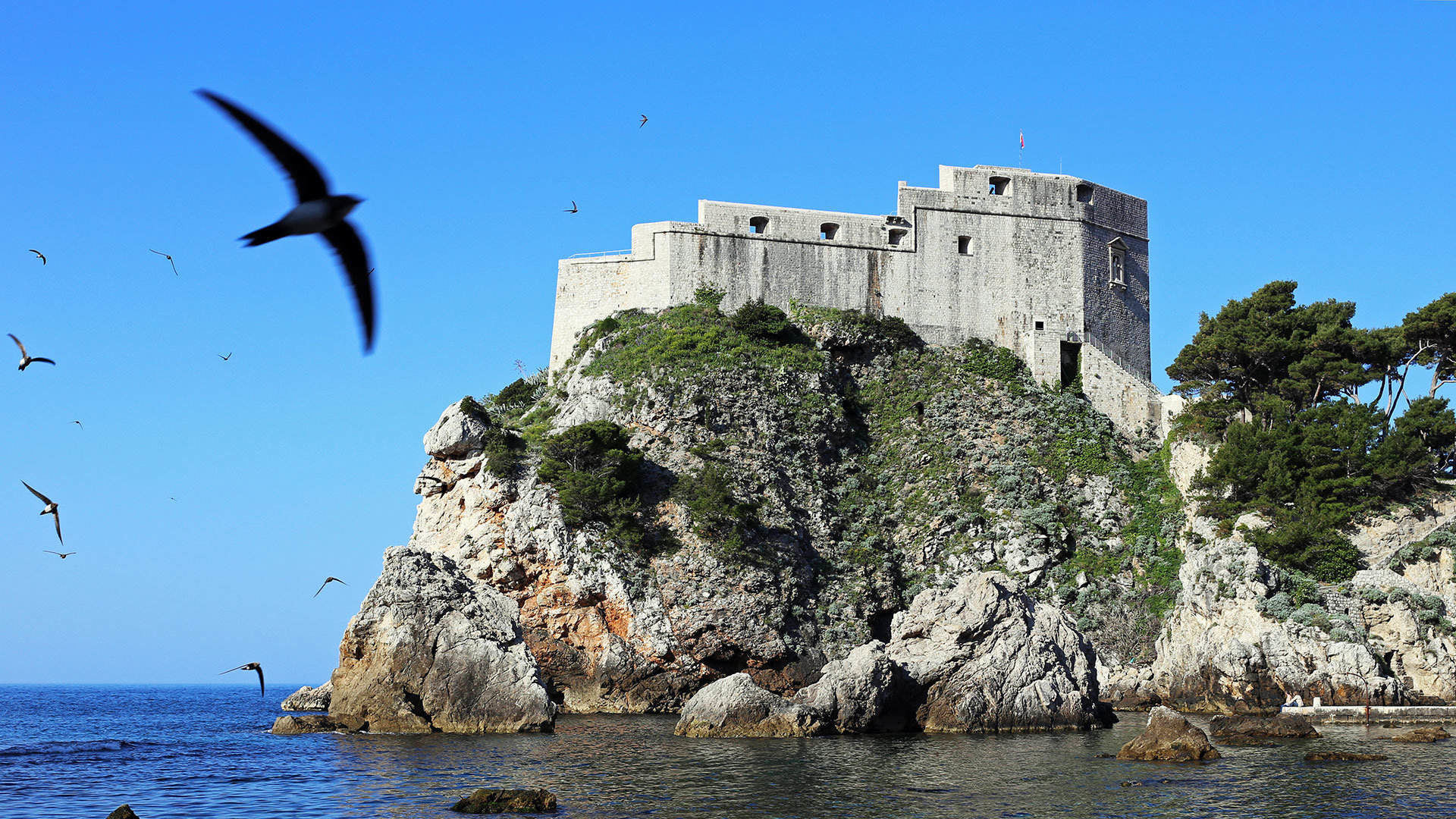
Lovrjenac Fort, ‘The Gibraltar of Dubrovnik’
The ramparts of the Fort are certainly suitable for stalking mysteriously, the thickness of the walls outside are over 12 m whilst those on the inside, facing the city, are deceptively fine. Two heavy drawbridges protect the Fort and above the old gate sits the inscription ‘Non Bene Pro Toto Libertas Venditur Auro’ (Freedom is not to be sold for all the treasures in the world) a sobering reminder of the many times this city has faced attacks from marauders, conquerors and enemies. The Fort itself is often referred to as ‘The Gibraltar of Dubrovnik’ due to its triangular pointy shape, jutting out grandly from the peninsula, standing guard against attack.
The stone walls were vital when the city resisted Venetian rule, indeed the Venetians had plans to build their own Fort on the site but the Dubrovnik residents beat the invaders to it. The structure marks a turning point in the 11th century for the city; should the Venetians have been able to build their own Fort, Dubrovnik would likely have been retained as an important trading post for the conquerors. However, when the Venetian ships arrived, laden with materials for the construction of a fort, they were told to return to Venice by the town and turned away from the port.
The huge stone building overshadows both entrances to the city, from the sea and by land. The ‘Chronicles of Ragusa’ reveal that the Fort was built within just three months and from then on, perpetually reconstructed and improved. The fortress has been upgraded several times with the major alterations made in the 15th and 16th centuries by the municipal builder I. K. Zanchi of Pesaro. He also repaired the crumbling parapets and his name is carved in tiny letters on one of the sea facing walls, a memory of the affection he once held for the fort. Today the Fort continues to be a symbol of strength for the people of Dubrovnik, the gateway to the city and if you so desire, you may even marry there; ceremonies can take place on one of the parapets or beneath the ancient gates.
Photo credit: Archive Tourist Board Dubrovnik / Photographer: Igor Brautović
